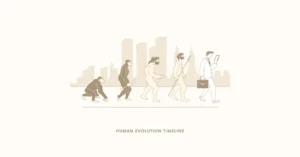AI Answer Evaluation Platform Live Now. Try Free Answer Evaluation Now
Observation Method of Research
Anthropology, being a discipline dedicated to understanding the breadth and depth of human experiences across cultures, societies, and history, relies on various methods of data collection and analysis. One such crucial method is observation, a fundamental tool in an anthropologist’s repertoire.

Definition of Observation
Observation, in anthropological parlance, refers to the systematic process of watching, listening to, and recording the activity of individuals or groups in their natural settings [1]. As opposed to casual everyday observation, anthropological observation involves an organized and focused approach to gathering and interpreting data. It implies a detailed understanding of the context, characteristics, and behaviors of people within their socio-cultural environments [2]. An apt example could be the work of anthropologists like Malinowski, who lived among the Trobriand Islanders to gain profound insights into their culture and society.
Overview of Anthropology and Observation Method
Observation is often considered the hallmark of ethnographic research, the dominant research method in anthropology. From its early use by pioneer anthropologists like Bronislaw Malinowski and Margaret Mead to the modern anthropologists studying digital cultures, observation remains a key methodology. It enables anthropologists to immerse themselves in the culture under study, facilitating a deep understanding of the nuances of human behavior, rituals, social norms, and other cultural practices. For instance, Clifford Geertz’s detailed observations of the Balinese cockfight provided significant insights into the Balinese society [3].
In the following sections, we will further explore the nature, types, and practical aspects of observation in anthropology, shedding light on its theoretical foundations, methodological considerations, and its application in contemporary anthropological research.
Understanding Observation in Anthropology
To delve into the realm of human experiences and intricacies, anthropologists often turn to observation as an effective and reliable tool. The methodology offers unparalleled insights into human behavior and societal norms, among other facets of social life.
Importance of Observation in Anthropology
Observation plays a pivotal role in anthropology for several reasons. Firstly, it provides anthropologists with first-hand information about the people, their practices, and their lived realities, reducing the chances of data distortion. It also allows for a holistic perspective that appreciates cultural nuances and local knowledge. For instance, the works of Margaret Mead in Samoa where direct observation elucidated the islanders’ attitudes towards adolescence and sexuality [4].
Secondly, observation aids in discerning the non-verbal aspects of human communication – facial expressions, gestures, body language, etc., which are often as important as spoken words in understanding a culture. This nuanced understanding can be crucial in cultures where direct verbal communication might be limited.
Lastly, observing the same phenomena at different times or contexts provides an opportunity for triangulation, enhancing the reliability and validity of the findings.
Different Types of Observation Methods in Anthropology
Observation methods in anthropology are generally categorized into 3 types:
- Participant vs Non-participant Observation:
| Participant Observation | Non-participant Observation | |
| Description | Researchers immerse themselves in the culture or community, participating in daily activities. | Researcher maintains a detached stance, observing without active involvement |
| Example | Bronislaw Malinowski’s in-depth study of the Trobriand Islands | Studies where the researcher cannot or chooses not to actively participate in the community (e.g., observing a religious ritual of a faith they don’t belong to). |
| Strengths | Facilitates deep, firsthand understanding of the culture or community | Provides a broader, unfiltered perspective |
| Limitations | Might introduce bias as the observer is an active participant in the community. | Limits the depth of understanding, as the observer remains an outsider. |
- Direct vs In-direct Observation:
| Direct Observation | Indirect Observation | |
| Description | The researcher is physically present, observing in real-time. | The researcher collects data without being physically present, often through recordings or third-party reports. |
| Strengths | Allows for spontaneous follow-up and immediate data interpretation. | Reduces observer effect; participants behave more naturally. |
| Limitations | Presence of the observer may influence participants’ behavior. | Limits the researcher’s control over the context of the data collection. |
- Ethnography:
Ethnography is often considered the cornerstone of anthropological research. Derived from Greek words ‘ethnos’ (folk/people) and ‘grapho’ (to write), ethnography is the systematic recording and analysis of a culture or society, often through participant observation. It allows researchers to capture the nuances of cultural practices, societal norms, and human behavior [5].
Ethnography has been an instrumental tool in some of the most impactful anthropological studies. Malinowski’s study of the Trobriand Islanders and their exchange system, known as ‘Kula ring’, is a quintessential example of ethnography in action [6].
Practical Implementation of Observation
Observation as a research method entails more than just watching and listening; it involves careful planning, thoughtful engagement, meticulous recording, and consideration of ethical aspects.
Preparation for Observation
Preparation includes acquiring knowledge about the cultural context, learning the local language, identifying key informants, and establishing a rapport with the community [1]. For example, before conducting her seminal work in Samoa, Margaret Mead spent considerable time preparing and learning about the local customs and language [4].
Conducting Observation in the Field
In the field, the researcher engages in systematic observation, participating in or observing daily activities, social events, rituals, etc. They should be flexible, adapting to unforeseen circumstances, and open to learning from the community. Ethnographic studies, such as Malinowski’s research in the Trobriand Islands, exemplify this immersive approach to fieldwork [6].
Recording and Noting Observations
Observational data should be recorded in a detailed and organized manner. Field notes, photographs, video and audio recordings are common methods of documentation. In addition to documenting observable facts, researchers often note their reflections, insights, and questions arising during observation.
Ethical Considerations
Ethical considerations in observational research include respecting local customs, seeking informed consent from participants, and ensuring confidentiality and anonymity of the data collected. For example, anthropologists studying vulnerable populations should take extra care to protect their participants from any potential harm.
Case Studies
Observation techniques are extensively applied across all branches of anthropology. The following case studies illustrate the diversity of its application.
Observation in Cultural Anthropology: Case Study
Cultural anthropologists extensively employ observation to understand the intricacies of human societies and cultures. For instance, Clifford Geertz’s study of the Balinese cockfight provides a seminal example [3]. Through his observations of this ritual, Geertz elucidated not only the event itself but the symbols, values, and social dynamics within Balinese society.
Observation in Biological Anthropology: Case Study
Observation plays a crucial role in biological anthropology too. Jane Goodall’s work with the chimpanzees of Gombe Stream National Park is a compelling case in point [7]. Her detailed observations over decades revolutionized our understanding of chimpanzee behavior, social structure, and tool use, contributing significantly to primatology.
Observation in Linguistic Anthropology: Case Study
Linguistic anthropologists use observation to study language use in social contexts. One example is William Labov’s study of linguistic variation in New York City department stores [8]. Through careful observation, Labov revealed a correlation between pronunciation patterns and socio-economic status, emphasizing the role of language in societal stratification.
Observation in Archaeology: Case Study
Archaeologists rely on observation during excavations and artifact analyses. Kathleen Kenyon’s archaeological work at Jericho serves as a prominent example [9]. Through methodical observation and recording, Kenyon unearthed vital insights about the site’s ancient history, demonstrating the significance of observation in archaeological investigations.
Observation Method in Contemporary Anthropology
As the socio-cultural landscape evolves, so does the application of the observation method in anthropology. The modern era has seen significant advancements and innovations in this research method.
Advancements and Innovations in Observation Method
Modern anthropologists have expanded their observational toolkit with various technological aids such as video and audio recording devices, digital note-taking tools, and advanced software for data analysis. These tools enable researchers to collect richer, more nuanced data, facilitate effective data organization, and aid in the rigorous analysis of observational data.
Observation in Digital Anthropology
In response to the growing influence of the digital world, anthropologists have begun studying online communities and digital cultures through a subfield known as digital anthropology. Here, the observation method has been adapted to explore virtual communities, social media interactions, and other digital phenomena. A notable example is the work of Tom Boellstorff, who conducted an ethnographic study of the virtual world Second Life, creating an avatar and immersing himself in this digital society [10]. His work demonstrates the adaptability of the observation method to new realms of human sociality and interaction.
Despite these advancements, the core principle of the observation method—immersing oneself in the research context to understand human behavior and culture—remains at the heart of anthropological research.
Future Perspectives and Conclusion
As we look to the future, the observation method in anthropology will likely continue to evolve, driven by advancements in technology and a shifting socio-cultural landscape. An area of significant growth lies in digital anthropology, with virtual and augmented reality platforms providing new spaces for anthropological observation. The increasing ubiquity of artificial intelligence in society might also necessitate its incorporation into anthropological research.
The ethical landscape of observational research is also poised for evolution. With the rise of digital research, issues of digital privacy and informed consent in virtual spaces are likely to command increasing attention.
Despite these shifts, the fundamental principles of observation – careful, sustained, and reflexive attention to human behavior and culture – will likely remain central to anthropological inquiry. The strength of anthropology lies in its commitment to understanding the complexities of human life, a mission that observation, in its many forms, serves admirably.
In conclusion, the observation method, while deeply rooted in the history of anthropology, continues to adapt and thrive in the face of new research contexts and challenges. It is a testament to anthropology’s resilience and its unwavering dedication to illuminating the richness of the human experience.
References
[1] Kawulich, B. B. (2005). Participant observation as a data collection method. Forum Qualitative Sozialforschung/Forum: Qualitative Social Research, 6(2). https://doi.org/10.17169/fqs-6.2.466
[2] Bernard, H. R. (2011). Research methods in anthropology: Qualitative and quantitative approaches. AltaMira press.
[3] Geertz, C. (1973). The interpretation of cultures: Selected essays (Vol. 5019). Basic books.
[4] Mead, M. (1928). Coming of Age in Samoa. William Morrow & Co.
[5] Agar, M. (1996). The professional stranger: An informal introduction to ethnography. Academic Press.
[6] Malinowski, B. (1922). Argonauts of the Western Pacific. George Routledge & Sons, Ltd.
[7] Goodall, J. (1986). The Chimpanzees of Gombe: Patterns of Behavior. Belknap Press.
[8] Labov, W. (2006). The social stratification of English in New York City. Cambridge University Press.
[9] Kenyon, K. M. (1981). Excavations at Jericho. British School of Archaeology in Jerusalem.
[10] Boellstorff, T. (2008). Coming of age in Second Life: An anthropologist explores the virtually human. Princeton University Press.




